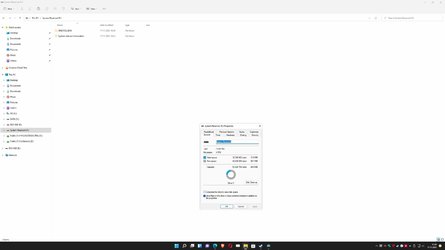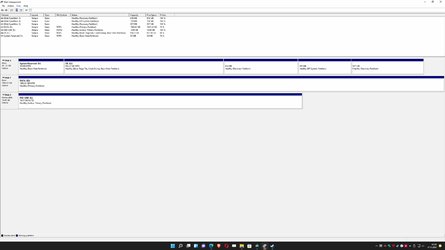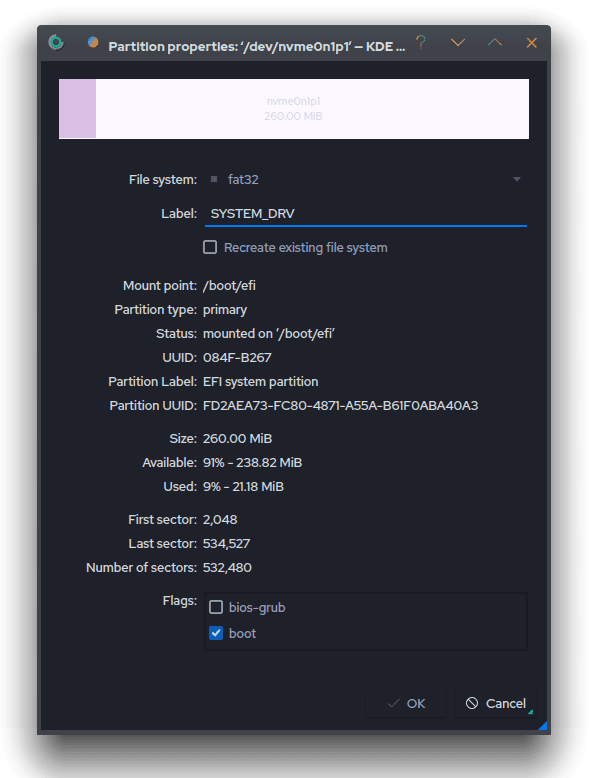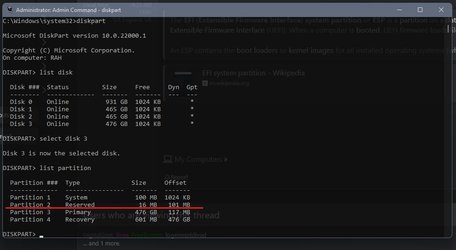Hi,
I've accidently formatted my driver F which says System Reserved (Windows 11), does this mean my system wont boot no more or is there an easy fix for this? or would I need to format and install windows 11 again?
System Reserved Partition is also called MSR (Microsoft System Reserved) and is the smallest of all partitions that a clean install automatically creates. It is usually 16 MB in size. In your case, it is 50 MB. Leave it as it is.
EFI partition (which is normally 100 MB) in size is the one that contains the boot files for all the OS installed on the disk. This is the most important partition for Windows to be able to boot. You can increase it to 300 MB to future proof it.
Recovery partition contains the WinRE (Windows Recovery Environment) files that is useful for troubleshooting Windows. It is usually over 500 MB. I would recommend increasing it to 1024 MB to future proof it. This partition isn't necessary to boot into Windows, and you can do without it as long as you don't have any Windows related problems. But it is recommended to have one as it will be very handy in case of a system crash AND you don't have a separate RECOVERY DISK (or System Repair Disk) at hand.
You need just one of each of the above partitions even when you have multiple OS installed on the disk.
I prefer to keep them to the left most in this order: EFI, MSR, Recovery.
I keep the largest partition on the rightmost to install the OS. This provides me the flexibility to resize the OS partition to create a Files (data) partition, install another OS, etc.
It is very easy to recreate the EFI and Recovery partitions if they become corrupt or get deleted. I have a simple
tutorial where I have listed the steps to recreate them. Check it out.












